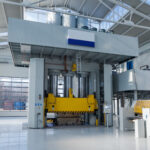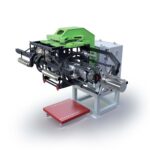We saw, spied actually, the Porsche Panamera for the first time in the US. The promise of a four-door 911 was blinding us, with the sheer idea of being able to share the joys.
The actual car was revealed, and even Porsche itself admitted they could’ve done better (years later, of course). Sure, we never imagine a car that would actually be a stretched 911, but we expected something that would at least look like the iconic Zuffenhausens machine. As it turns out, we might just received that with the second generation of the Panamera, which is expected to land next year. After being spied on numerous occasions on European tarmac, the vehicle was recently spotted testing on the long and less winding US roads.
Most of the changes we’re talking about cover the rear end. It’s not just the resemblance to the Neunelfer, but the back of the car no longer seems controversial. The vehicle seems longer and wider than before. The slight increase in size that appears to be present would make full sense.
Since Porsche is rumored to be working on a smaller sedan (tentatively named Pajun), it’s only natural for the Panamera to travel upmarket a bit.
We’ve also given a glimpse of the new Panamera’s cabin in a previous series of spyshots. The current model could pack more interior space, which is why the Executive model was born. The next generation will solve this issue, while also introducing the next face for Porsche’s one-button-for-each-function dashboard layout.
Underneath the car we’ll find the VW Group’s MSB architecture (Modular Standard Platform or Modularer Standardantrieb-Baukasten). This will be shared with high-end front-engined models with either rear-wheel drive or all-wheel drive. Bentley’s next Continental and Flying Spur are perfect examples. Then new platform will employ a mix between high-strength steels, aluminum and composite materials and is expected to bring an increase in torsional rigidity. Despite this and the size boost, the second-gen Panamera should lose about 200 lbs (90 kg).
In the powertrain department, the Panamera S already packs a new twin-turbo V6, which should be carried over. Nevertheless, Porsche will introduce a new generation of its twin-turbo V8 by the time the second generation of the four-door lands. It remains to be seen how the all-electric powertrain of the Mission E concept will affect the Panamera and/or the Pajun.















